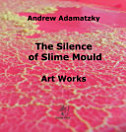Reaction-Diffusion Computers
окт. 2005 г. · Elsevier
5,0star
1 рецензијаreport
Е-книга
348
Страници
family_home
Соодветна
info
reportОцените и рецензиите не се потврдени Дознајте повеќе
За е-книгава
The book introduces a hot topic of novel and emerging computing paradigms and architectures -computation by travelling waves in reaction-diffusion media. A reaction-diffusion computer is a massively parallel computing device, where the micro-volumes of the chemical medium act as elementary few-bit processors, and chemical species diffuse and react in parallel. In the reaction-diffusion computer both the data and the results of the computation are encoded as concentration profiles of the reagents, or local disturbances of concentrations, whilst the computation per se is performed via the spreading and interaction of waves caused by the local disturbances. The monograph brings together results of a decade-long study into designing experimental and simulated prototypes of reaction-diffusion computing devices for image processing, path planning, robot navigation, computational geometry, logics and artificial intelligence. The book is unique because it gives a comprehensive presentation of the theoretical and experimental foundations, and cutting-edge computation techniques, chemical laboratory experimental setups and hardware implementation technology employed in the development of novel nature-inspired computing devices.Key Features:- Non-classical and fresh approach to theory of computation.- In depth exploration of novel and emerging paradigms of nature-inspired computing.- Simple to understand cellular-automata models will help readers/students to design their own computational experiments to advance ideas and concepts described in the book .- Detailed description of receipts and experimental setups of chemical laboratory reaction-diffusion processors will make the book an invaluable resource in practical studies of non-classical and nature-inspired computing architectures .- Step by step explanations of VLSI reaction-diffusion circuits will help students to design their own types of wave-based processors.Key Features:- Non-classical and fresh approach to theory of computation.- In depth exploration of novel and emerging paradigms of nature-inspired computing.- Simple to understand cellular-automata models will help readers/students to design their own computational experiments to advance ideas and concepts described in the book .- Detailed description of receipts and experimental setups of chemical laboratory reaction-diffusion processors will make the book an invaluable resource in practical studies of non-classical and nature-inspired computing architectures .- Step by step explanations of VLSI reaction-diffusion circuits will help students to design their own types of wave-based processors.
Оцени и рецензии
5,0
1 рецензија
Оценете ја е-книгава
Кажете ни што мислите.
Информации за читање
Паметни телефони и таблети
Инсталирајте ја апликацијата Google Play Books за Android и iPad/iPhone. Автоматски се синхронизира со сметката и ви овозможува да читате онлајн или офлајн каде и да сте.
Лаптопи и компјутери
Може да слушате аудиокниги купени од Google Play со користење на веб-прелистувачот на компјутерот.
Е-читачи и други уреди
За да читате на уреди со е-мастило, како што се е-читачите Kobo, ќе треба да преземете датотека и да ја префрлите на уредот. Следете ги деталните упатства во Центарот за помош за префрлање на датотеките на поддржани е-читачи.






